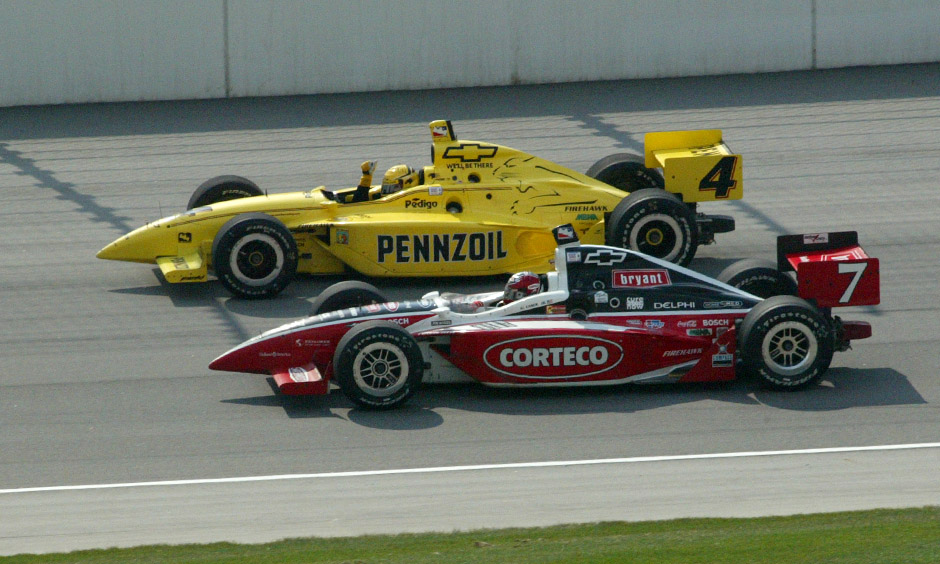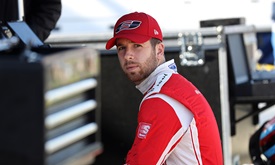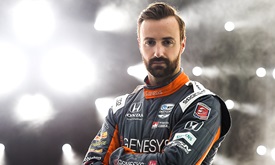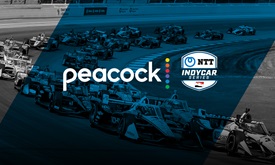INDYCAR Writers’ Roundtable: Volume 3
JAN 27, 2021
INDYCAR social media accounts recently have featured replays of some of the great races of the 2000s, including some of the spellbinding, cover-your-eyes events on 1.5-mile ovals, which often featured packs of cars racing inches apart at 215 mph for two hours.
Those races produced five of the six closest finishes in INDYCAR history, creating drama and excitement for fans and frayed nerves for drivers, teams and officials. But anyone who saw them remembers them.
So, this week’s INDYCAR Writers’ Roundtable will focus on those wild, wooly oval races from the 2000s. We also welcome a guest panelist who had a front-row seat to many of them, INDYCAR Media Relations Coordinator Arni Sribhen. Arni joined the INDYCAR PR team in 2004 after working at various races since the late 1990s, serving as a mainstay in media centers across the country during NTT INDYAR SERIES races while providing trackside notes and all sorts of other media assistance.
Today’s question: The NTT INDYCAR SERIES had some incredibly close, nail-biting pack races on 1.5-mile ovals from 2000-2009, as eight of the 10 closest finishes in the sport’s history occurred during that decade on those tracks. Which of those races was your favorite and why?
Arni Sribhen: There’s a reason why Texas Motor Speedway is called the second home of INDYCAR SERIES racing. And that’s because it routinely produced the most memorable oval races from the decade that ran from the 2000s.
Because it’s my home track, it shouldn’t be a surprise I’ve picked a race from TMS. But my favorite race, the June 2002 Boomtown 500, probably gets forgotten because there have been closer races – but there might not be a better finish in the decade.
Like all great races, it was probably destined to be a snoozer as pole winner Tomas Scheckter led 95 of the first 159 laps, but once he retired from the race with a clutch issue, the race really took off.
Because of fuel strategy, all the leaders had to pit before the checkered, setting up a 10-lap dash to the finish. Helio Castroneves, who had just wrapped up his second-straight Indy 500 win, stopped first and raced by leaders Al Unser Jr. and Airton Dare as they pitted a lap later. But everyone forgot about Jeff Ward. He also pitted early and was at speed when the leaders exited pit road. I remember being on pit lane – I was a track pit reporter at the time – and watching a big screen and thinking to myself, “Where did Wardy come from?”
The last five laps featured three lead changes and a tight four-car duel between Unser, Ward, Dare and Castroneves. It wasn’t a pack race, just four guys wanting to win. Ward led only one lap, the last one and won by .0111 of a second. It was the closest finish in series history for about three months.
Curt Cavin: This answer to this question is like reaching into a bag of chocolate: Each piece is worth the calories.
While my selection stands as the sixth-closest finish in INDYCAR history, the Chevy 500 in September 2002 easily was the most significant because the shootout decided a season championship. To set the table, Sam Hornish Jr. entered the season as the reigning (and still very young) Indy Racing League champion from spunky Panther Racing, but Helio Castroneves and Gil de Ferran were the veterans from Team Penske’s mighty CART program. It was assumed that the latter would mop up the IRL field as the sport inched toward unification, but Hornish opened the season by winning at Homestead.
Castroneves won the second race, at Phoenix, and Hornish took the third, at Fontana. Castroneves won the Indianapolis 500, and Hornish grabbed wins at Richmond and the penultimate race at Chicagoland to set up a winner-take-all season finale between the two Sept. 15 at Texas Motor Speedway.
Hornish and Castroneves combined to lead 161 of the 200 laps, and the future teammates effectively went side by side for the final 25 laps, nearly touching on several occasions. On the outside, Hornish crossed the finish line .0096 of a second in front, then the second-closest finish in series history, to secure his second consecutive series title.
Paul Kelly: Sorry to be so boring with a predictable choice, but my choice is the race that was anything but dull – the Delphi Indy 300 on Sept. 8, 2002 at Chicagoland Speedway. The race featured still the closest finish in INDYCAR history, as Sam Hornish Jr. edged Al Unser Jr. by .0024 of a second.
The duel between pole sitter Hornish and legendary two-time Indianapolis 500 winner Unser started on Lap 75 of the 200-lap race, when Hornish passed Little Al for the lead. Unser took the lead from Helio Castroneves on Lap 167, and then it was on like Donkey Kong between the phenom and reigning series champion Hornish and the legend Little Al for the next 33 laps.
Hornish and Unser officially swapped the lead at the start-finish line nine times in the last 33 trips around the 1.5-mile oval, but who knows how many times they actually swapped spots before the main timing loop at the line. It was nuts, beautiful madness.
Adding to the drama was the proximity of Castroneves and 2000 series champion Buddy Lazier, who drove side-by-side right in the tire tracks of Hornish and Unser, ready to pounce on any mistakes by the leaders.
The longest either Hornish or Unser led during that last stint was nine laps. The race see-sawed back and forth, with Hornish grabbing the lead for good on Lap 195.
On the final lap, Unser hugged the white line, with Hornish on the outside. Lazier tried to climb to the top of the track to make it a three-wide duel for the win but backed off and tucked in behind Hornish.
Hornish and Unser roared toward the finish in lockstep, with Hornish taking the win by inches. The victory served as a springboard toward Hornish’s second straight series title. I think it took a day or two for my blood pressure to drop after that race. What a show.




















